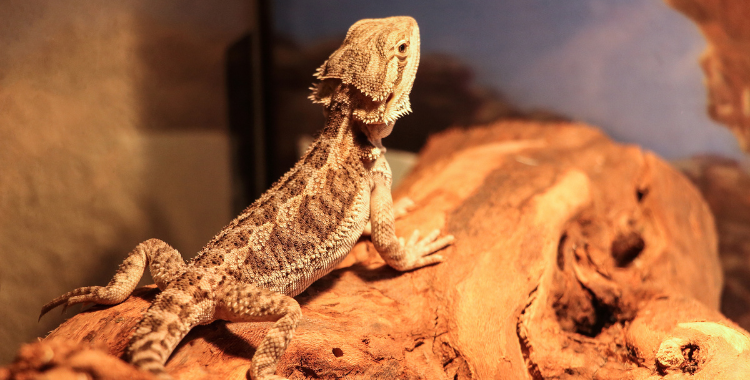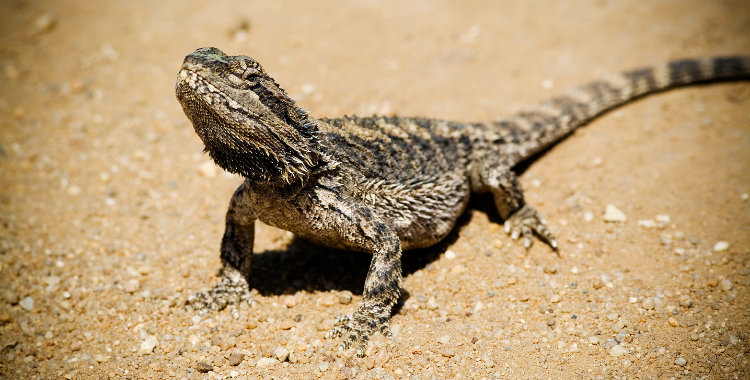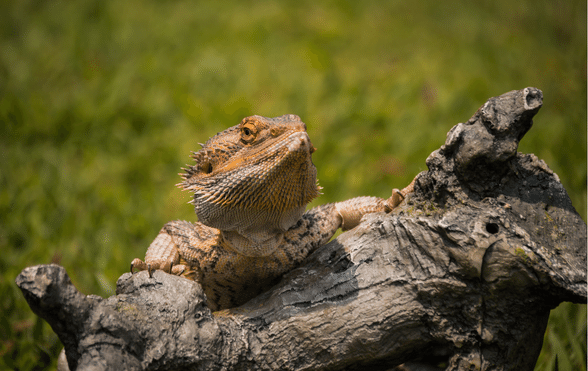Many of us are trying to stick to tighter budgets during the current cost of living crisis. We explore ways that both new and existing bearded dragon owners can save money.
With ever-rising prices in the UK, many of us are trying to budget and are seeking ways to save money. From food, to vivariums, we explore ways that both new and existing bearded dragon owners can save money.
Whilst bearded dragon owners can make savings on a number of areas such as diet, bedding and vivarium interior, there are some aspects of owning a bearded dragon which are non-negotiable when it comes to cost.
Before we get into this article, we just want to stress the importance of having the correct environment for your beardie. A key part of this is ensuring that they’re at the right temperature. With rising electricity prices, you shouldn’t be tempted to reduce the amount of lighting or heat you provide your dragon with.
That being said, there are a number of ways in which you can cut down costs of owning a bearded dragon without impacting their quality of life. We share our top tips in this article.
Consider “wonky” fruit and vegetables
Many supermarkets offer what they refer to as “wonky” fruit and vegetables. These are often not quite as aesthetically pleasing and are usually a little cheaper than their non-wonky alternatives.
It’s worth bearing in mind that wonky fruit and vegetables are usually sold with a similar or equivalent shelf life however always ensure produce is fresh and good quality before feeding to your beardie. If you’re wondering what fruit and vegetables are safe for your beardie, check out our bearded dragon diet guide.

Feeding your beardie wonky fruit and vegetables can be a way to save money
Ensure you’re using leftovers.
When speaking to exotic owners, some have reported around 30% of the fruit and vegetables they buy for their pet goes to waste.
There are two easy ways to avoid this waste.
The first is to be creative with your leftovers. It’s likely you’ll have a variety of fruit and vegetables leftover so look to include them in your own diet.
You could turn them into a vegetable tart or pizza, a smoothie, a vegetable pasta bake, use them for soups and stocks or freeze them for a later date. You could keep it super simple and use them in salads or fruit salads!
Please be advised that frozen fruit and vegetables are NOT suitable to be fed to your beardie.
You may also wish to feed your feeder insects with some of your leftover fruit and vegetables. You’re unlikely get rid of all of your leftovers by doing this but it will help to provide your feeder insects with some extra nutrients ahead of feeding them to your pet.
Store fruit and vegetables correctly
Did you know different fruit and vegetables come with different storage guidelines? And that some items you may have in your fruit bowl will make those around it ripen quicker?
Bananas aren’t safe for beardies to eat but you also should avoid storing them with other fruit as they release a gas called ethene which makes other fruit around them ripen more quickly.
Another storage tip is for sweet potatoes – many store them in the fridge but it’s actually advisable to store them somewhere cool, dry and well ventilated. Storing them in the fridge may mean they produce a hard centre and unpleasant taste, potentially meaning your beardie won’t want to eat them.
Another beardie favourite, cabbage, is quite easy in terms of it’s storage requirements. Simply store it, unwashed in the fridge in a plastic bag. Wash ahead of feeding to your beardie, however we advise against pre-washing as this can cause it to lose Vitamin C which will mean it spoils quicker.
If you’re ever unsure what the best way to store a certain fruit or vegetable is, researching will only take you a few moments and it’s likely to save you money as storing fresh produce for your beardie correctly will prolong it’s shelf-life therefore reducing waste and saving you money. View our bearded dragon diet guide. for more advice on what to feed your beardie
Consider adopting
Rehoming a bearded dragon from an animal charity or buying one who is slightly older is often cheaper than buying a baby bearded dragon.
We must however stress that although this is a way to cut down initial costs, you need to understand that there will be ongoing reoccurring costs to own a bearded dragon such as food, electricity, substrate and any veterinary care or medicine costs your beardie may require.

Adopting a beardie may help reduce upfront costs
Buy items second hand
If you’re a new beardie owner or your pet is in need of some upgrades, purchasing items second hand is often cheaper than buying brand new.
It’s often worth checking out reptile specific forums and Facebook groups as people often post the items they’re selling there.
You’re likely to be able to pick up items such as vivariums, food and water bowls and decoration such as hides and hammocks.
As previously mentioned, ensuring you get your dragon’s temperature correct is extremely important so we advise against sourcing lighting, temperature or heat equipment second hand as most bulbs only last around 10-12 months.
Furthermore, we advise exercising caution when buying second hand. Facebook provides guidance on how to safely buy and sell on their platform.
Switch to a reusable substrate
If you’re using a substrate which frequently needs replacing such as sand or paper towels, you can quickly save money by switching to a reusable option.
Reptile carpets, lino or ceramic tiles are all reusable options. They still require regular cleaning but can be used again and again meaning you haven’t got the same costs to replace that you have with single use options. Our bearded dragon set up guide covers these options in more detail. If you are switching substrate, it’s critical to ensure it’s still a bearded dragon safe substrate.
Additionally, reusable options are also more eco-friendly which means as well as being kinder to your bank balance, they’re also kinder to the environment.
Consider insurance for your beardie
We all know that vet bills don’t come cheap and simply cannot be avoided if your pet is in need of veterinary care.
You may wish to consider bearded dragon insurance to cover unexpected bills in your pet’s time of need.
Please be aware that insurance does come with terms and conditions which you should read carefully before purchasing insurance.
Grow your own
Bearded dragons can enjoy a wide variety of weeds such as dandelions, catsear and dead nettles. You may find some of these naturally in your garden and from there can seek to grow more to feed your bearded dragon. Always thoroughly wash weeds before feeding to your dragon.
If you have a weed-free garden but want to grow these for your dragon, a number of garden centres and pet shops sell seeds to grow these yourself.
If growing or picking your own weeds, there’s two things to bear in mind.
The first is to ensure that these aren’t treated with any sort of pesticides as these could be harmful, potentially fatal to your beardie.
In addition to this, ensure that no other animal has toileted on these weeds. If planting your own weeds, try to ensure they’re positioned away from where you cat or dog chooses to do their business.
Upcycle items to provide enrichment for your beardie
In our Bearded Dragon set up guide, we advise your dragon needs a number of items such as somewhere to bask, a hide to retreat to and branches to explore.
Most of the above items are available in pet shops but you could seek to source these items from around your home and garden.
You may wish to research how to create a retes stack as an area for your beardie to explore. In addition to this, if you have a spare large rock in your garden, you could give this a sufficient wash and provide your dragon with it in their vivarium as a place to bask.
Plant pots, cardboard boxes and old plastic storage containers are other items some bearded dragon owners have reported to have upcycled. If you are upcycling, please ensure that you’re using items which are still in reasonable condition e.g. nothing which is broken or has sharp edges or points as these could hurt your pet.
We always advise ensuring that your pet is safe with the items you provide them with. If you’re ever in doubt, speak to your vet for further advice.

